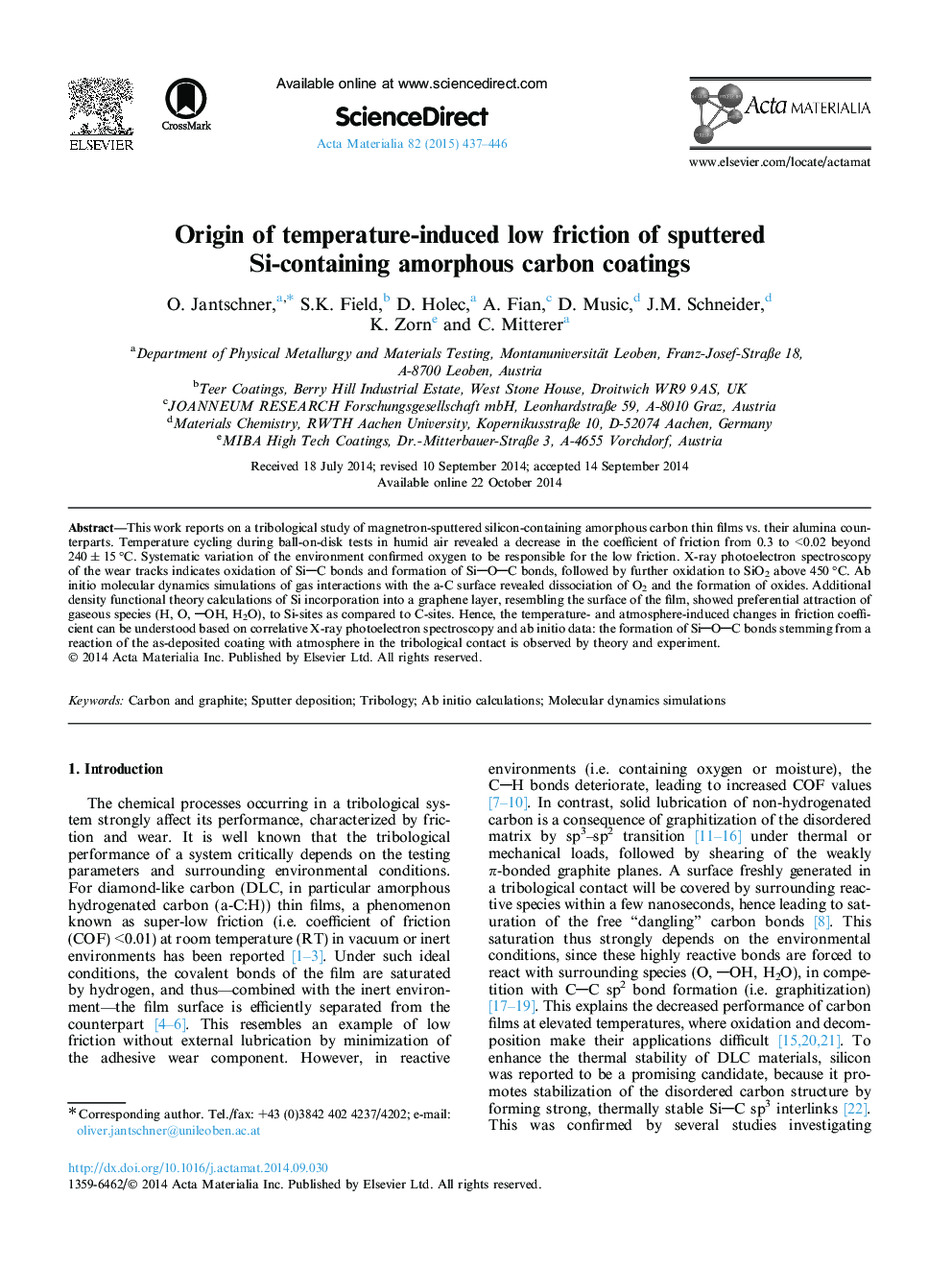| Article ID | Journal | Published Year | Pages | File Type |
|---|---|---|---|---|
| 1445537 | Acta Materialia | 2015 | 10 Pages |
This work reports on a tribological study of magnetron-sputtered silicon-containing amorphous carbon thin films vs. their alumina counterparts. Temperature cycling during ball-on-disk tests in humid air revealed a decrease in the coefficient of friction from 0.3 to <0.02 beyond 240 ±± 15 °C. Systematic variation of the environment confirmed oxygen to be responsible for the low friction. X-ray photoelectron spectroscopy of the wear tracks indicates oxidation of SiC bonds and formation of SiOC bonds, followed by further oxidation to SiO2 above 450 °C. Ab initio molecular dynamics simulations of gas interactions with the a-C surface revealed dissociation of O2 and the formation of oxides. Additional density functional theory calculations of Si incorporation into a graphene layer, resembling the surface of the film, showed preferential attraction of gaseous species (H, O, OH, H2O), to Si-sites as compared to C-sites. Hence, the temperature- and atmosphere-induced changes in friction coefficient can be understood based on correlative X-ray photoelectron spectroscopy and ab initio data: the formation of SiOC bonds stemming from a reaction of the as-deposited coating with atmosphere in the tribological contact is observed by theory and experiment.
